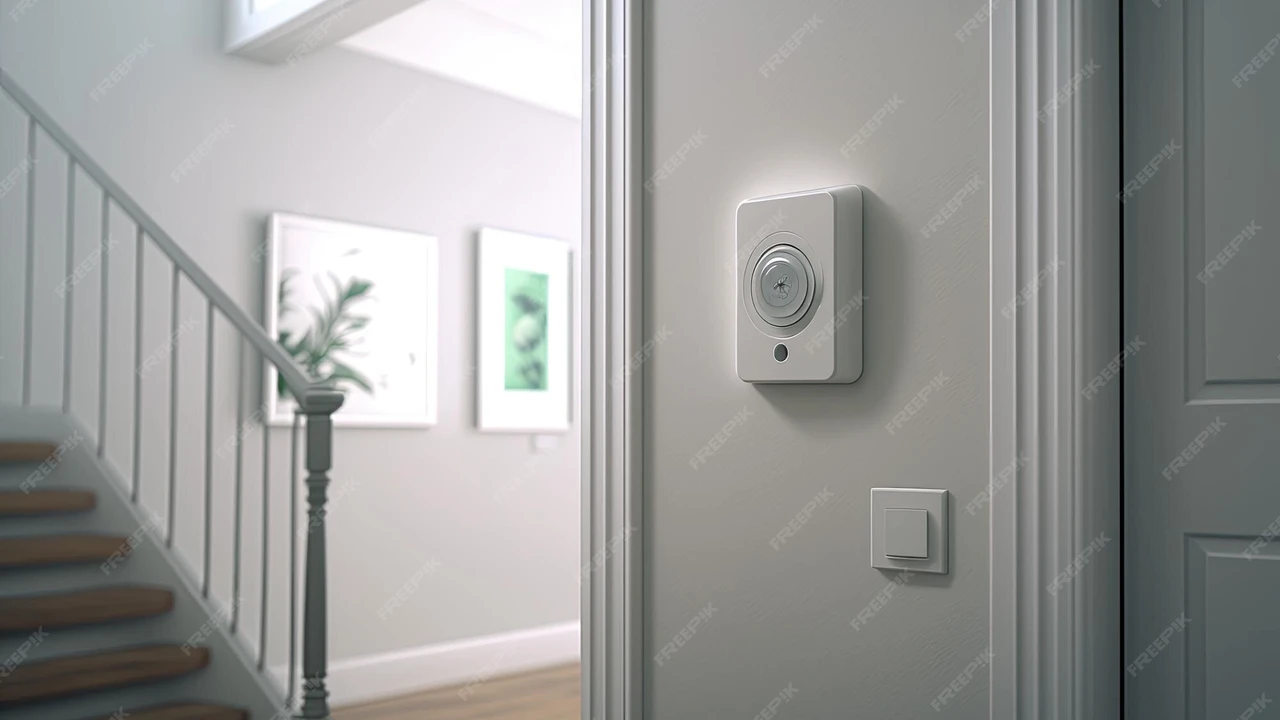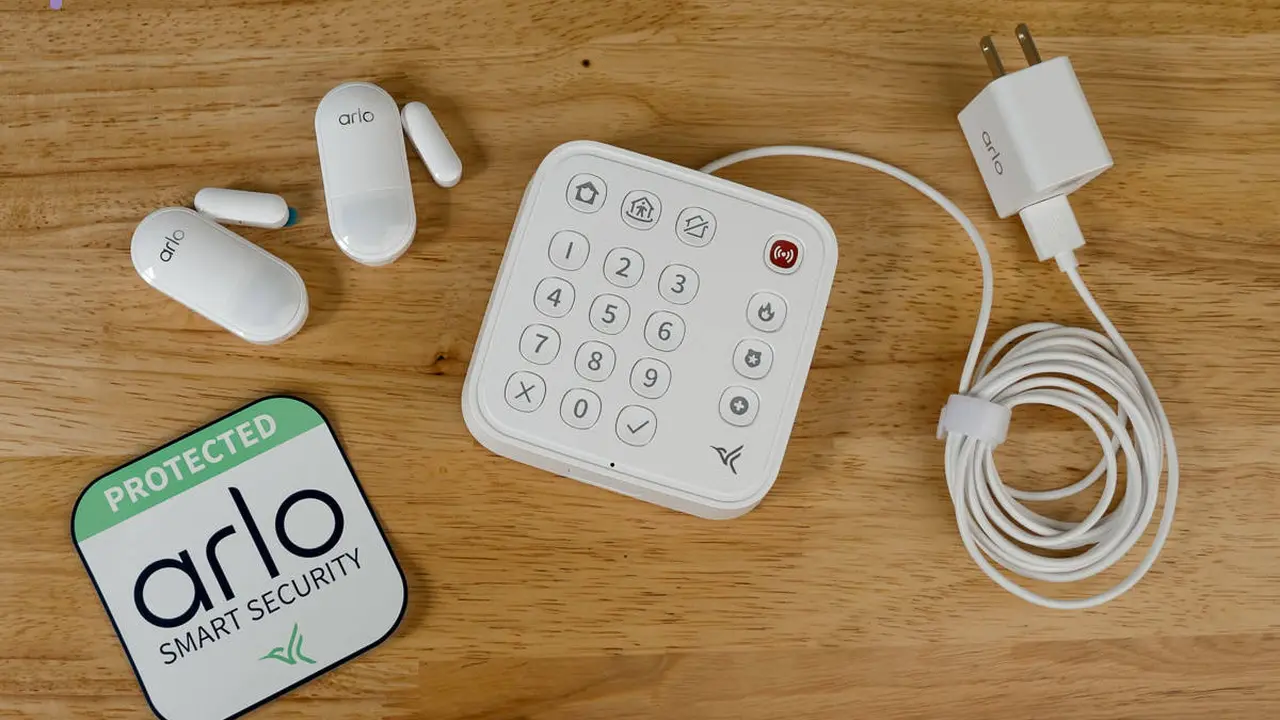Best Motion Sensors for Indoor and Outdoor Use
Review the best motion sensors designed for both indoor and outdoor applications offering reliable detection.

Best Motion Sensors for Indoor and Outdoor Use
Hey there, security enthusiasts! Let's talk about motion sensors – those unsung heroes of home and business security. They're like silent sentinels, always on alert, ready to tell your security system when something's amiss. Whether you're looking to beef up your indoor defenses or keep an eye on your outdoor perimeter, choosing the right motion sensor is crucial. It's not just about detecting movement; it's about smart detection, minimizing false alarms, and integrating seamlessly with your existing setup. In this comprehensive guide, we're going to dive deep into the world of motion sensors, covering everything from how they work to the best models on the market, their ideal use cases, and even a little bit about pricing. So, let's get started and find the perfect motion detection solution for your needs!
Understanding Motion Sensor Technology How They Work
Before we jump into product recommendations, it's super helpful to understand the tech behind these clever devices. Motion sensors aren't all created equal, and they use different methods to detect movement. Knowing these differences will help you pick the right one for your specific environment.
Passive Infrared PIR Motion Sensors Explained
PIR sensors are probably the most common type you'll encounter. They work by detecting changes in infrared radiation, which is essentially heat. Every living thing, including humans and animals, emits some level of infrared energy. When a warm body moves into the sensor's field of view, it causes a rapid change in the infrared energy detected, triggering an alarm. Think of it like this: the sensor has a stable baseline of heat in its environment. When something warm moves across that baseline, it sets off the alert. They're great for general motion detection and are often found in both indoor and outdoor applications.
Microwave Motion Sensors and Their Advantages
Microwave sensors are a bit different. Instead of detecting heat, they emit microwave pulses and measure the reflection off moving objects. They cover a much larger area than PIR sensors and can even detect movement through walls, which can be both an advantage and a disadvantage. Their ability to 'see' through certain materials makes them useful in specific industrial or commercial settings, but it also means they're more prone to false alarms from movement outside the intended detection zone. They're generally more expensive than PIR sensors.
Dual Technology Motion Sensors Combining PIR and Microwave
To combat the weaknesses of individual sensor types, many advanced motion sensors use dual technology, combining PIR and microwave detection. For an alarm to trigger, both technologies usually need to detect movement simultaneously. This significantly reduces false alarms, making them ideal for environments where reliability is paramount, like high-security areas or outdoor settings where environmental factors can cause issues for single-tech sensors. They offer a fantastic balance of sensitivity and false alarm immunity.
Ultrasonic Motion Sensors and Their Niche Uses
Ultrasonic sensors emit sound waves at a frequency higher than humans can hear. They then measure the time it takes for these waves to bounce back. If the time changes, it indicates movement. These are less common in general home security but are sometimes used in specific applications, like detecting movement in small, enclosed spaces or for pet immunity, as they can be tuned to ignore smaller objects.
Key Features to Look for in Motion Sensors Smart Detection
Beyond the basic technology, modern motion sensors come packed with features that enhance their performance and usability. Knowing what to look for will help you make an informed decision.
Pet Immunity Avoiding False Alarms from Animals
If you have furry friends, pet immunity is a must-have feature. These sensors are designed to differentiate between the movement of a human and that of a pet, typically by ignoring objects below a certain weight or size. This prevents your cat or dog from triggering false alarms every time they wander through the house. Look for sensors that specify their pet immunity weight limits, usually ranging from 40 to 80 pounds.
Adjustable Sensitivity and Coverage Areas
The ability to adjust sensitivity is super important. You might want a sensor to be highly sensitive in a rarely used room but less so in a high-traffic area. Similarly, adjustable coverage areas allow you to fine-tune the detection zone, preventing the sensor from picking up movement outside your desired perimeter, like passing cars or pedestrians if it's an outdoor sensor.
Wireless Connectivity and Battery Life
Most modern motion sensors are wireless, making installation a breeze. Look for sensors that use reliable wireless protocols (like Z-Wave, Zigbee, or proprietary frequencies) and offer long battery life. Nobody wants to be changing batteries every few months, so a year or more of battery life is a good benchmark.
Weather Resistance for Outdoor Motion Sensors
This one's a no-brainer for outdoor sensors. They need to withstand rain, snow, extreme temperatures, and UV exposure. Look for an IP (Ingress Protection) rating, with IP65 or higher being ideal for outdoor use, indicating protection against dust and water jets.
Smart Home Integration and Compatibility
If you're building a smart home, you'll want motion sensors that play nicely with your existing ecosystem. Look for compatibility with platforms like Amazon Alexa, Google Assistant, Apple HomeKit, or specific security hubs like SmartThings or Abode. This allows for advanced automations, like turning on lights when motion is detected or integrating with your smart thermostat.
Best Indoor Motion Sensors for Home Security Top Picks
Alright, let's get to some specific recommendations for keeping the inside of your home secure. These sensors are chosen for their reliability, ease of use, and smart features.
Ring Alarm Motion Detector
Use Case: General indoor security for Ring Alarm users. Perfect for living rooms, hallways, and entry points.
Features: This PIR sensor offers adjustable sensitivity and pet immunity up to 50 pounds. It's super easy to install and integrates seamlessly with the Ring Alarm system, allowing for instant alerts to your phone and professional monitoring if you subscribe to Ring Protect Plus. It's a solid, no-frills option that just works.
Comparison: Simpler than some advanced sensors, but its strength lies in its integration with the Ring ecosystem. It's a great choice if you're already invested in Ring products.
Price: Around $30-$40 USD.
Aeotec TriSensor Z-Wave Plus
Use Case: Smart home enthusiasts looking for multi-functional sensors. Ideal for rooms where you want motion, temperature, and light sensing.
Features: This little powerhouse is a Z-Wave Plus device, meaning it's highly compatible with a wide range of smart home hubs (like SmartThings, Hubitat, Vera). It detects motion, temperature, and ambient light, allowing for advanced automations. For example, you could set it to turn on lights only when motion is detected AND the room is dark. It's small, discreet, and offers good battery life.
Comparison: More versatile than a basic motion sensor due to its additional sensors. Requires a Z-Wave hub to function fully. Offers more customization for smart home routines.
Price: Around $50-$60 USD.
Honeywell Home PROSIX PIR Wireless Motion Detector
Use Case: Professional-grade indoor security, often used with Honeywell Home security systems. Suitable for larger homes or businesses needing robust detection.
Features: This is a high-performance PIR sensor designed for reliability and false alarm immunity. It features advanced signal processing to distinguish between humans and other sources of heat. It's part of Honeywell's ProSeries security platform, offering encrypted wireless communication for enhanced security. Pet immunity is also a key feature.
Comparison: A more robust and professional option compared to DIY-focused sensors. Often installed by security professionals, but can be self-installed if you have a compatible Honeywell system. Higher price point reflects its advanced features and reliability.
Price: Around $80-$100 USD.
Best Outdoor Motion Sensors for Perimeter Protection Top Picks
Securing your outdoor spaces requires sensors that can handle the elements and differentiate between genuine threats and environmental disturbances. Here are some top contenders.
Arlo Pro 4 Spotlight Camera with Motion Detection
Use Case: Comprehensive outdoor surveillance with integrated motion detection, lighting, and camera. Perfect for driveways, yards, and entryways.
Features: While primarily a camera, the Arlo Pro 4 excels in motion detection. It uses advanced object detection to identify people, vehicles, and animals, reducing false alerts. When motion is detected, it can trigger a bright spotlight, a siren, and begin recording 2K HDR video. It's completely wireless, weather-resistant (IP65), and integrates with the Arlo ecosystem and smart home platforms.
Comparison: More than just a motion sensor, it's a complete outdoor security solution. The integrated camera and spotlight add significant value, though it comes at a higher price point than standalone sensors. Requires an Arlo subscription for full cloud features.
Price: Around $180-$200 USD per camera.
Optex WFX-360HW Wireless Outdoor PIR Detector
Use Case: Professional-grade outdoor perimeter protection for larger properties or commercial sites. Ideal for creating invisible 'tripwires' around your property.
Features: Optex is renowned for its high-quality outdoor detection. The WFX-360HW is a dual-PIR sensor designed to create a narrow, long-range detection pattern, making it excellent for protecting specific boundaries. It features advanced anti-masking technology and robust weatherproofing. It's a wireless sensor that can integrate with various alarm panels via a universal transmitter.
Comparison: This is a specialized, high-performance sensor for serious outdoor security. It's more complex to set up than consumer-grade options but offers superior false alarm immunity and detection accuracy in challenging outdoor environments. Often requires professional installation or a good understanding of security systems.
Price: Around $200-$250 USD (sensor only, transmitter extra).
Ring Smart Lighting Motion-Activated Pathlight
Use Case: Combining motion detection with smart lighting for pathways, gardens, and low-light areas. Great for deterring intruders and enhancing visibility.
Features: This isn't just a motion sensor; it's a smart pathlight that illuminates when motion is detected. It connects to the Ring Bridge (sold separately) to integrate with your Ring ecosystem. You can customize sensitivity, link it with other Ring devices (like cameras), and receive motion alerts. It's battery-powered and weather-resistant, making it easy to place anywhere.
Comparison: A more aesthetic and functional option than a standalone sensor, especially if you want to add lighting. It's part of the Ring Smart Lighting family, offering a cohesive outdoor lighting and security solution. Less about direct alarm triggering and more about deterrence and illumination.
Price: Around $30-$40 USD per pathlight (Ring Bridge around $50).
Installation Tips and Best Practices for Motion Sensors
Even the best motion sensor won't perform optimally if it's not installed correctly. Here are some tips to get the most out of your devices.
Optimal Placement for Indoor Motion Sensors
For indoor PIR sensors, aim for corners of rooms, facing entry points. Avoid placing them directly opposite windows or heat sources (like vents or radiators) as these can cause false alarms. Also, consider the height – typically 6-8 feet off the ground is good, but check your sensor's specific recommendations for optimal coverage and pet immunity.
Strategic Positioning for Outdoor Motion Sensors
Outdoor sensors require more thought. Place them to cover key access points like gates, driveways, and vulnerable windows. Avoid aiming them directly at busy streets or areas with frequent animal activity if they don't have robust pet immunity. Consider the sun's path – direct sunlight can sometimes interfere with PIR sensors. Mounting them under eaves or in shaded areas can help. Also, ensure they have a clear line of sight to the area you want to protect, free from obstructions like dense foliage.
Minimizing False Alarms Environmental Factors
False alarms are a pain, and they can lead to you ignoring real threats. For PIR sensors, drafts, sudden temperature changes, and even small animals can be culprits. For outdoor sensors, swaying branches, heavy rain, or even large insects can sometimes trigger them. Dual-tech sensors are generally better at false alarm immunity. Always test your sensors after installation and adjust sensitivity as needed. Keep the sensor lens clean!
Integrating with Your Existing Security System or Smart Home Hub
Make sure your new motion sensors are compatible with your existing security panel or smart home hub. Follow the manufacturer's instructions for pairing. Once integrated, explore the automation possibilities. For example, you could set your indoor lights to turn on when an indoor motion sensor is triggered at night, or have your outdoor camera start recording when an outdoor motion sensor detects movement.
The Future of Motion Detection AI and Advanced Analytics
Motion sensor technology isn't standing still. We're seeing some exciting advancements that are making these devices even smarter and more reliable.
AI Powered Motion Detection Person vs Object Recognition
This is a game-changer. AI-powered motion detection can differentiate between a human, a vehicle, and an animal. This means fewer false alarms from squirrels or passing cars and more accurate alerts for actual threats. Many high-end security cameras already incorporate this, and we're seeing it trickle down into dedicated motion sensors.
Predictive Analytics and Behavioral Patterns
Imagine a sensor that learns your daily routines and can flag unusual activity. That's where predictive analytics comes in. By analyzing patterns of movement over time, these systems can identify deviations that might indicate a security breach, even before an explicit 'motion detected' event. This is still emerging but holds huge promise for proactive security.
Edge Computing for Faster and Smarter Processing
Instead of sending all data to the cloud for analysis, edge computing allows motion sensors to process information right on the device. This means faster detection, reduced latency, and less reliance on internet connectivity for basic functions. It also enhances privacy, as less raw data needs to be transmitted off-site.
Making Your Choice The Right Motion Sensor for You
So, how do you choose? It really boils down to your specific needs, budget, and existing security setup.
For basic indoor security, a reliable PIR sensor from a reputable brand like Ring or SimpliSafe is often sufficient and budget-friendly. If you're a smart home enthusiast, a Z-Wave or Zigbee multi-sensor like the Aeotec TriSensor offers more versatility.
For outdoor protection, consider integrated solutions like the Arlo Pro 4 if you need video surveillance and lighting. If you're looking for robust, professional-grade perimeter detection, Optex offers excellent specialized sensors, though they might require more technical know-how to install and integrate.
Always prioritize pet immunity if you have animals, and ensure any outdoor sensor has a good IP rating for weather resistance. Don't forget about compatibility with your existing security system or smart home hub – seamless integration makes everything work better.
Ultimately, the best motion sensor is one that provides reliable detection, minimizes false alarms, and gives you peace of mind. Take your time, do your research, and choose wisely to keep your home or business safe and sound!
:max_bytes(150000):strip_icc()/277019-baked-pork-chops-with-cream-of-mushroom-soup-DDMFS-beauty-4x3-BG-7505-5762b731cf30447d9cbbbbbf387beafa.jpg)






